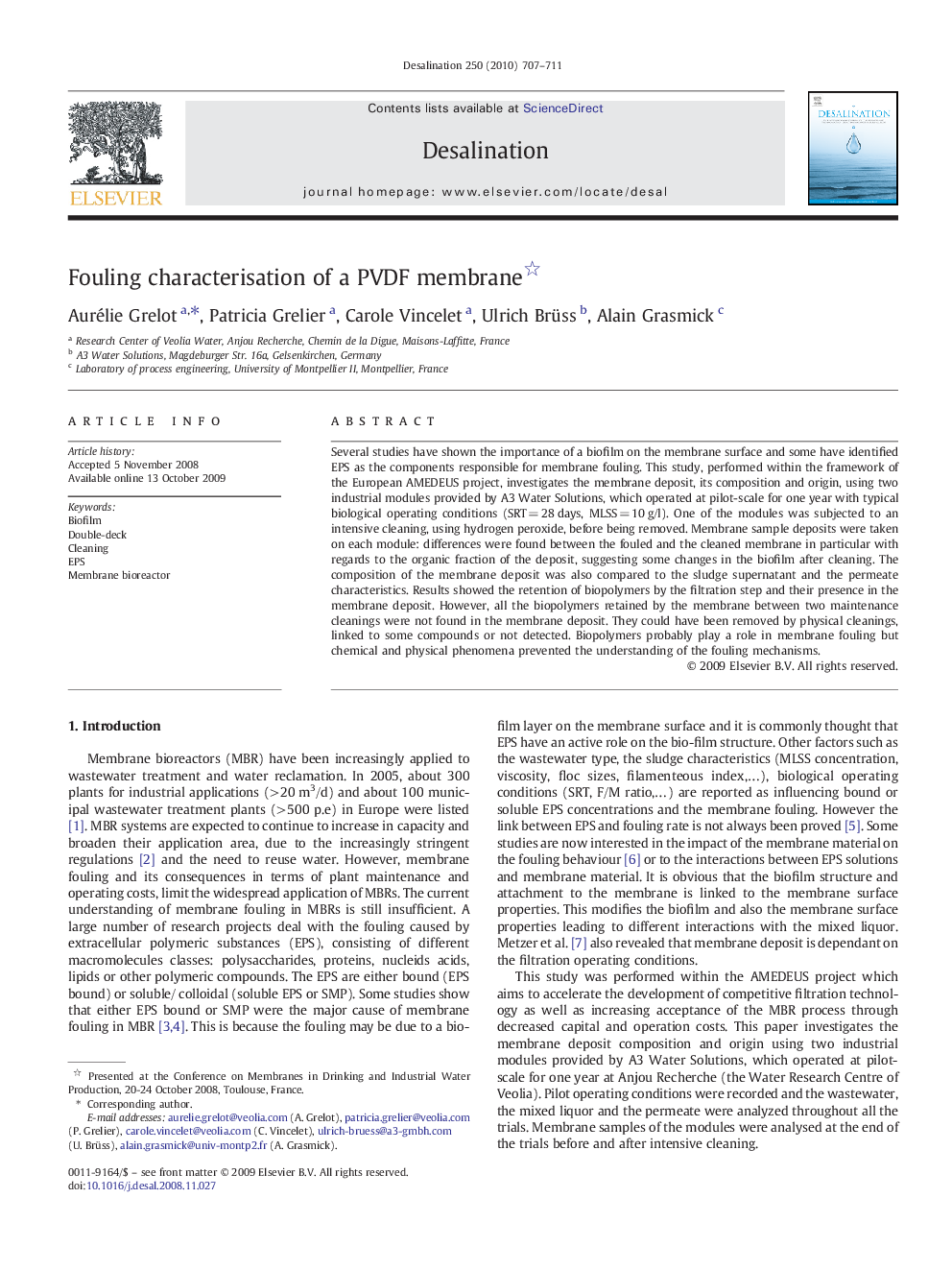| Article ID | Journal | Published Year | Pages | File Type |
|---|---|---|---|---|
| 626076 | Desalination | 2010 | 5 Pages |
Several studies have shown the importance of a biofilm on the membrane surface and some have identified EPS as the components responsible for membrane fouling. This study, performed within the framework of the European AMEDEUS project, investigates the membrane deposit, its composition and origin, using two industrial modules provided by A3 Water Solutions, which operated at pilot-scale for one year with typical biological operating conditions (SRT = 28 days, MLSS = 10 g/l). One of the modules was subjected to an intensive cleaning, using hydrogen peroxide, before being removed. Membrane sample deposits were taken on each module: differences were found between the fouled and the cleaned membrane in particular with regards to the organic fraction of the deposit, suggesting some changes in the biofilm after cleaning. The composition of the membrane deposit was also compared to the sludge supernatant and the permeate characteristics. Results showed the retention of biopolymers by the filtration step and their presence in the membrane deposit. However, all the biopolymers retained by the membrane between two maintenance cleanings were not found in the membrane deposit. They could have been removed by physical cleanings, linked to some compounds or not detected. Biopolymers probably play a role in membrane fouling but chemical and physical phenomena prevented the understanding of the fouling mechanisms.
